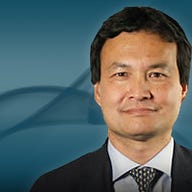Ballmer on tight rein in Australia

His two-day visit -- which ends tomorrow -- comes as Microsoft Chairman and chief software architect Bill Gates also tours Asia-Pacific countries. Gates' visit includes Thailand and Singapore, with other nations believed to be on the list.
Ballmer's tightly-scripted agenda includes a closed-to-the-media presentation at midday tomorrow to the Committee for the Economic Development of Australia (CEDA) entitled The Amazing Race: Innovation with Impact.
The mystifying media lockout was a joint decision between CEDA and Microsoft, the latter's public relations agency claimed. However, ZDNet Australia understands CEDA acted on a Microsoft request.
In contrast, a presentation by Gates in Singapore on 1 July -- covering forthcoming launches of products such as SQL Server 2005, Visual Studio 2005 and Longhorn -- is open to all.
The agency also could not say where Ballmer was travelling to next.
His schedule includes a presentation to partners tonight from 5pm at which he will cover the mission and direction of Microsoft's partner program, the role of partners in helping customers realise the potential of their IT investments and opportunities for growth. The chief executive is also scheduled to speak to Microsoft employees today and government ministers, including the man responsible for e-government and procurement, Special Minister of State, Senator Eric Abetz, over the two days.
However, Ballmer and Gates are likely to have more important things on their minds during their respective tours than public Microsoft "state of play" gigs.
Ballmer's visit comes as the software heavyweight tries to contain the fallout from the decision by its largest Australian customer, Telstra, to cancel its field test of Internet Protocol (IP) TV.
While Telstra has cited "internal and local market reasons" rather than Microsoft's offering as being behind its decision not to move forward, the carrier's move is nevertheless being viewed as a setback for Redmond's IPTV efforts.
Ballmer is expected to meet Telstra executives during his visit, with the IPTV issue likely to be raised.
Microsoft is facing increasing pressure from alternative products as state and federal governments move to level the playing field between proprietary and open-source software.
Canberra recently released a guide to agencies' procurement of open source, while the New South Wales government is next month expected to formally constitute a panel of suppliers of Linux and open-source software solutions for its agencies.
ZDNet Australia was unable to confirm that Gates was including South Korea in his travels. However, should he visit the nation, the country's decisions to roll out a homegrown open-source platform to 10,000 schools, its work with China and Japan to build an Asian version of Linux, and the Korea IT Industry Promotion Agency's target of 40 percent of Korean servers being run on Linux by 2010 will be at the forefront of his thinking.
At a meeting with the Prime Minister of Vietnam, Phan Van Khai, last week, Gates said the company would lend support to Vietnamese technology companies, and provide computer and software training to more than 50,000 teachers in the South East Asian nation.
Gates is also scheduled to make his first visit to Israel at the end of October as part of his annual trip to Europe.
The executive tours come shortly after Microsoft promoted Jean-Philippe Courtois from head of its European operations to president of international sales, services and marketing. His territory now covers Europe, the Asia-Pacific and Latin America.